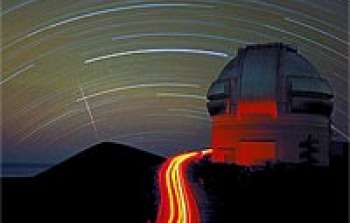sci08006 — Announcement
Gemini Opportunity Survey Results
April 30, 2008
In the last issue of Currents, we asked readers to respond to a survey regarding the potential opportunity for increased US participation in Gemini. The survey was motivated by the expectation that the UK will want to sell some of their Gemini nights. We asked two questions: should the US buy additional nights, and should the purchase be done in a way that would increase the US share of Gemini. We also gave readers the opportunity to send in text comments to explain their answers or make related points.
As of May 9, we received 62 survey responses, with the great majority in favor of increased US participation in Gemini. The tally of survey responses is as follows:
-
Bearing in mind that any purchase will need to be accompanied by a marginal budgetary commitment, is there a strong need for the US to acquire additional nights on Gemini and should this be set as a high priority for NSF?
Yes:51
No:10
No Response:1 -
Is there benefit in seeking to acquire these through an additional share of Gemini as an alternative to simply buying nights?
Yes:51
No:8
No Response:3
Comments received in the survey expressed a variety of opinions and raised many important issues, such as the importance of public access to large telescopes, how to ensure aperture balance in the System, and achieving a closer alignment between Gemini capabilities and US community needs. Some of those who replied “No” to both questions commented that they could not support buying more time unless they knew what would not get funded as a consequence. Most of those who replied “Yes” to both questions and who submitted comments stated that they thought that the community need for more access to 8-meter time was substantial.
One respondent answered affirmatively based on the philosophy of open community access to 8- to 10-meter aperture telescopes, commenting, “I am concerned that many of the largest telescopes (Keck, Magellan, MMT, Subaru) are essentially in private hands and accessible mainly to astronomers with special privileges based on their institution of employment. I think more democratic, fair access to such telescopes is appropriate for the USA.”
Another respondent commented that, “Becoming a larger shareholder in Gemini makes sense, given the reinvestment in smaller telescopes. Balance is the key to providing the broadest access to the full range of telescope apertures needed for breakthrough science.”
Other respondents were interested in looking for a balance of investment in Gemini and other large telescope facilities. One respondent commented that it was important to ask, “Should Gemini be a higher priority than continuing to support or expand the TSIP program (and getting more Keck time instead!)?”
Comments that referred to the second question either said that they endorsed the future commitment that an increased “share” would imply or that they thought that this would be a way to assure closer alignment between the needs of the US community and the capabilities and performance that Gemini provides. One respondent commented, “It would be nice to see a more coherent management structure and more involvement by the national centers in the running of Gemini and setting priorities for upgrades — not even just for new instruments, but for getting the ones they have working!”
Another commented, “Buying an additional share of Gemini gives the US more bargaining power to influence the design of the next round of Gemini instrumentation, for instance. Buying time provides no influence on decisions affecting Gemini’s future performance.”
This survey provides valuable input both to the immediate question of acquiring more Gemini time and to the longer term issue of Gemini’s role within the US ground-based optical/infrared system. This last point has been a subject of much discussion recently. NOAO has been working with the Gemini Observatory and the AURA Board and member representatives to address issues such as those identified in the survey. NOAO has charged a committee, Access to Large Telescopes for Astronomical Instruction and Research (ALTAIR), to understand the capabilities that will be needed on 6.5- to 10-meter telescopes in the 2010-2020 time frame in order to meet the scientific aspirations of the community. As the large telescope equivalent of the ReSTAR committee, ALTAIR will investigate and recommend how both Gemini and the non-federally funded telescopes fit into this picture. Look for announcements of opportunities to provide input to this committee in Currents and in the NOAO Newsletter.
About the Announcement
| Id: |
ID
sci08006
|
